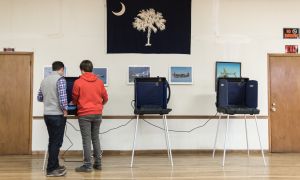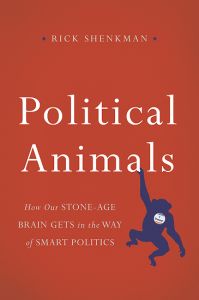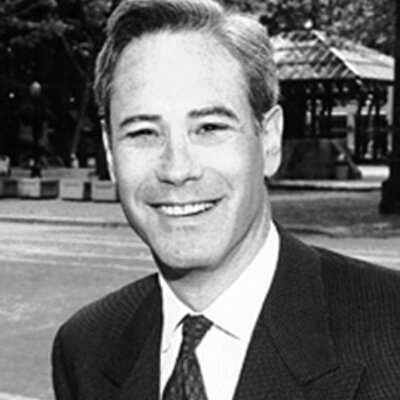Rick Shenkman is editor and founder of the popular History News Network, the website that features leading historians’ perspectives on current events. In his new book, Political Animals: How Our Stone-Age Brain Gets in the Way of Smart Politics, he attempts to understand what shapes voters’ responses to politicians.
Shenkman argues that in the voting booth, “contrary to what we tell ourselves, it’s our instincts rather than arguments appealing to reason that usually prevail.” In this excerpt, he wonders what it would be like if voters — on the left and the right — made up their minds on the issues based on actual facts instead of what they assume to be true.
In 1988, James Fishkin, a political scientist who now teaches at Stanford, came up with the idea of a deliberative poll. In a normal poll a voter is asked a bunch of questions about subjects he may or may not know something about. That is the extent of the interaction between the pollster and the voter. The pollster then moves on to the next person. In a deliberative poll a voter is asked a bunch of questions about subjects he probably doesn’t know much about and is then educated about those subjects — usually at a weekend conference where he has the opportunity to study materials from all sides and engage in in-depth discussions about what he’s read. Experts are brought in to help participants make sense of the material they are given. At the end of the conference, by which time he has become an educated voter on the issues under review, he is surveyed again.

Corey Threatt assists Tim Nicholson at a voting machine for the Republican presidential primary at American Legion Post 79 on February 20, 2016, in West Columbia, South Carolina. (Photo by Sean Rayford/Getty Images)
The first televised deliberative poll conference held in the United States took place in the presidential election year of 1996 in Austin, Texas, over the weekend of January 19–21. The conference attracted 460 people. They represented all walks of life and were drawn from diverse geographical populations in both Red and Blue states. A quarter of the participants came from families with an income of less than $20,000 a year. One woman agreed to attend because she would be able to stay in a hotel with hot running water. Jim Lehrer of PBS served as the anchor. Trained moderators led the discussions. As a precaution against bias, the materials given to voters were reviewed ahead of time by two members from opposite parties, Democrat Barbara Jordan and Republican Bill Frenzel. Once again voters picked up an enormous amount of basic information, and once again they changed their opinions, moving from simple-minded answers to the 66 questions that were asked, to more nuanced positions. And, no, they didn’t always move in a more liberal direction. While opinion shifted in favor of bigger budgets for child care and education, the voters decided that the safety net programs would be better left to the states to manage. This suggested that ingrained ideological biases are no match for facts. Both liberals and conservatives in the group seemed willing to let the facts shape their opinions. When conservatives became informed about the benefits of child care they swung behind programs to help the poor rear their children. So much for the belief that conservatives are so rigidly ideological that facts don’t matter.

Published by Basic Books, January 5, 2016
James Fishkin has run his conferences around the world. Every time he holds one he gets the same results. They are nothing short of extraordinary. Voters aren’t dumb. They are ignorant. When you expose them to the relevant information they are able to digest it and make sense of it. This suggests that democracy can work. It means charlatans can be stopped. Fishkin notes that in 1996 Pat Buchanan, when he was running for president, was asked if he would cut Medicare to balance the budget. No, Buchanan answered. He would protect Medicare, which was the politically safe answer. But he added that he would cut foreign aid. This too was a safe answer — foreign aid is wildly unpopular. But it was also a classic nonsense answer. Foreign aid consumes less than 1 percent of the total federal budget. It’s a rounding error. But most voters don’t know that. So they think it’s a serious answer. You see? What voters need are facts. Facts can protect them. Fishkin’s optimistic message is that we can make democracy function if we just get the facts into voters’ hands. In other words, what we have is not a stupid-voter problem. We have an information problem.
That, at any rate, is what seems to be the lesson of Fishkin’s conferences. People are educable. Ignorance can be cured. But was that ever really in doubt? We send children to school, after all, because we believe they can learn. We spend billions on the higher education system because we believe that if you give students the opportunity to learn about complicated subjects, they will. Proving that unknowledgeable voters can be turned into knowledgeable ones doesn’t actually prove much that we didn’t already know. Ignorant voters lack knowledge, but their problem is not that they have trouble learning. The problem is that on their own they don’t try, relying instead on biases of one sort or another to guide their thinking.
We think we have an ignorance problem. But do we actually have a motivational problem?
The people who attend Fishkin’s conferences are plenty motivated, but that’s because Fishkin uses incentives. He pays people to attend his conferences. People who went to the Austin conference got a $300 honorarium. He also picks up the cost of their meals and puts them up at a hotel. Attendees from faraway places are flown in. All that begins to suggest why people attend. Being invited to a conference like this is exciting to many people, especially when there’s the promise of national media attention. For most attendees this is the first time they will have the chance to meet somebody like Jim Lehrer who can be seen on national television. Fishkin goes to great lengths to encourage people to participate. In his book about the Austin conference he explains that he was able to get a Chicago voter who’d never flown in an airplane to agree to come by flying a friend along to keep her company.
This suggests that if we want smart voters we need to start paying them. If we want people to follow the news closely we should set up a website where people can take a weekly current-events quiz, and if they pass, pay them. Want people to vote? Pay them. Want people to join with their friends every few months to debate public issues? Pay them. Incentives, we know, help motivate salesmen and CEOs. Why not use them to help voters become better voters? As we’ve seen in Fishkin’s project, incentives work.
Is this the solution for which we’ve been waiting? In a perfectly rational world — one run by economists — it might be. But the world is not run by economists, and it isn’t very rational. In the real world Americans generally balk at spending public money on elections. Over the last few years they have even turned against the modest reforms of the Watergate era, which provided for the public financing of presidential elections. After the effort to extend the Watergate reforms at the federal level faltered, reformers moved to the states. Clean-election reforms, which are designed to take private money out of politics by publicly financing campaigns, were tried in ten states at various levels of government. None captured the sustained imagination of the public. Many of the reforms were subsequently rolled back, declared unconstitutional, or defunded.
No one, to be sure, has tried paying voters directly to become more knowledgeable about issues and candidates. But that’s for a reason. It’s not because of moral qualms about paying voters, though a strong argument can be made that we shouldn’t pay voters, because paying them cheapens the meaning of citizenship. The reason is practical. Voters would find it insulting to be told that they have to be paid to make them do what they should do of their own volition. Anyone who dared suggest that voters need to be paid because they are citizen delinquents would instantly be branded as elitist and anti-American.
An alternative to paying people is to change the culture. In Scandinavian countries, for example, where civics education is baked into the culture like a thick chocolate filling in a perfectly balanced communal soufflé, voters take a lively interest in politics. When Scandinavians are quizzed about the issues and the structure of their governments they know the answers as well as students who have just completed a high-level civics course. Culture, it turns out, can work as effectively as the incentives James Fishkin employs. The lesson of the Scandinavian experience is that if you teach people civics in school and then continue to emphasize civics in adult education courses — 75 percent of Swedes participate as adults in civics-study circles at some point in their lives — they will retain the information they learned in school and will continue to express an interest in politics. You don’t have to bribe them.
What seems especially helpful is creating a vast reserve of social capital on which people can draw. People need to feel their voice is heard and that their leaders are responsive. The system has to seem fair. As people review their standing in society they have to feel that under democratic institutions they have prospered — or at least have had a chance to prosper. And people can’t bowl alone, to borrow the phrase popularized by sociologist Robert Putnam. They have to join groups. In which countries do people join voluntary organizations the most? The Scandinavian countries, surveys show.
But is it really all that simple? If, for example, social trust is the critical factor, as is often claimed by civics reformers, then we should expect to see the highest voter turnout in local elections. Which elected officials do American voters say they trust the most? Their local officials. Which elections in the United States draw the least number of voters year in and year out? Local elections. In Los Angeles in 2013 the mayoral primary drew just 21 percent of the registered voters, and this was after $16 million was spent by the candidates in a campaign with no incumbent, which should have triggered higher interest, but didn’t. In New York City in 2009 so few people showed up to vote in the Democratic primary for mayor — 11 percent of registered voters — that the New York Times put the story on the front page under the headline “A Primary Turnout So Low It May Be a Modern Record.”
Evidently, whatever lies behind the Scandinavian miracle is not easily identified. We know it’s in the culture, but we can’t be sure what in the culture is exactly responsible or what the right mix of cultural elements is. There are a lot of unknown unknowns. And we cannot know if what works in Scandinavia, a region marked by demographic homogeneity, will work in the United States, a country made up of peoples from across the globe. That is a known unknown. Together, these facts lead to a lot of unknowns.
Americans clearly have not made a commitment to a vibrant civics culture in the Scandinavian mold. But we have tried. The results, unfortunately, have been underwhelming. In 2000 Senator Robert Byrd of West Virginia, convinced that Americans’ ignorance of history was putting the Republic at risk, got Congress to pass a program to improve the teaching of history by teaching the teachers of history better methods. Fifty million dollars was spent on the effort over a few years. The teachers thought the program was well worth it. Studies showed that it had no impact on students. Byrd then got the Congress to spend an additional $119 million on the project. The result was the same. Teachers raved. Students showed no improvement.
Supreme Court justices have been especially prominent in the campaign to raise civics standards. In the 1980s, Chief Justice Warren Burger became so committed to the cause of teaching Americans about the Constitution that he resigned from the Court on a seemingly quixotic campaign to ignite popular interest in the upcoming bicentennial of the Constitution. Resign from the Court for this? People were taken aback. But Burger thought it was vital work. Unfortunately, no evidence was ever adduced to demonstrate that his efforts left a lasting impression. Americans remained as ignorant as ever.
When Justice Sandra Day O’Connor left the Court a generation later, she became convinced that ignorance about the Constitution remained rampant. To do something about it she founded a group expressly for the purpose of teaching young students civics. On the group’s website, iCivics, students can play games designed to help them learn about the Court, immigration reform, voting, and other topics. The games are compelling. Here’s one everybody might find handy: Responsibility Launcher. “Have you ever wanted to knock some civic sense into someone?” the game asks. “In Responsibility Launcher, you can. You’ll remind citizens that their civic duties aren’t just responsibilities, they help get things done!” Sounds promising. There’s even an appealing mischievousness uncommon in civics efforts. Students are told that if they can’t knock sense into someone they should try an anvil. A picture of an anvil then appears, as if the advice should be taken literally. But there’s no proof this or any of the other games are having much of an impact. On the day I checked the website the anvil game had garnered just 77 Likes on Facebook. By contrast, Apu, one of the more obscure characters on the The Simpsons, had 27,943 Likes.
Excerpted from Political Animals: How Our Stone-Age Brain Gets in the Way of Smart Politics by Rick Shenkman, on sale now from Basic Books.




